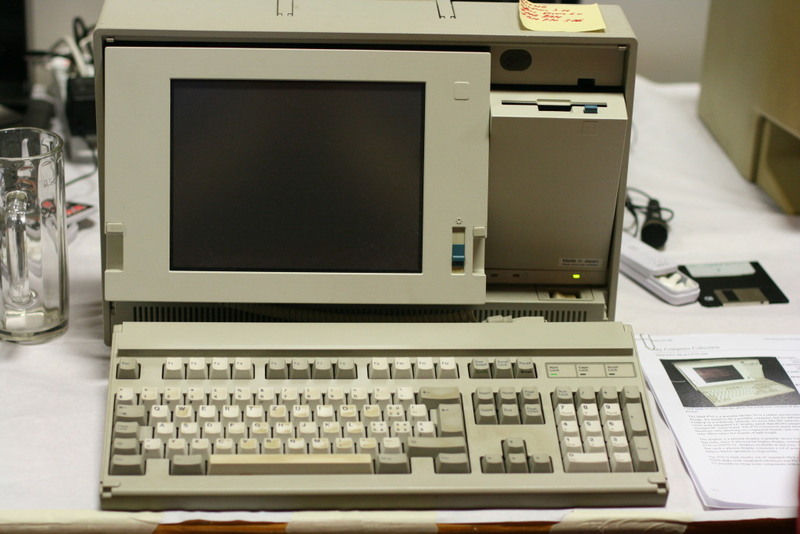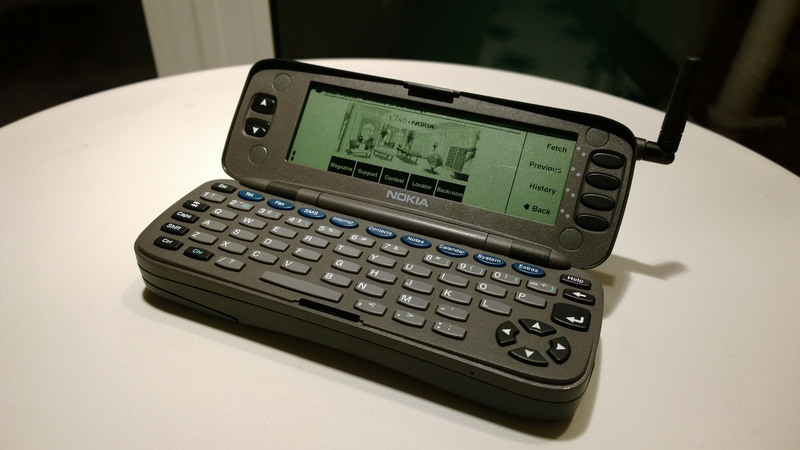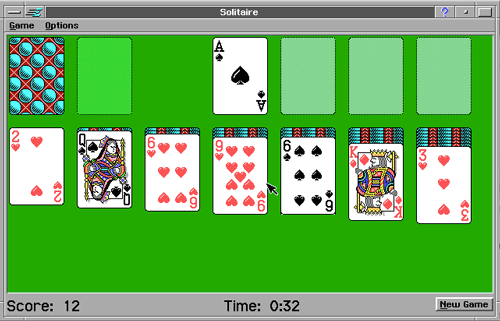The story of GeoWorks, the upstart and rival Microsoft Windows from the 90s

Commodore 64
In the early 1990s, there was still no guarantee that Microsoft Windows would take hold of the market, although thanks to MS-DOS, they had a clear advantage over many competitors.
One of the iconic AOL graphical interfaces at that time tried for some time not to put all the eggs in one basket, and supported the DOS version of its pseudo-Internet software using a GUI platform, which few people knew: GeoWorks.
It was an operating system from the era when the modem did not seem to be mandatory. It was ridiculously lightweight, thanks to its GEOS (Graphical Environment Operating System) ancestor, the Commodore 64 operating system.
The platform made the company Berkeley Softworks (not to be confused with Berkeley Systems, the authors of the famous screen saver " flying toasters "). For a while, its product was one of the most popular programs for Commodore 64 due to its functionality and ability to work on inexpensive equipment .
“GEOS did not become the first GUI system. Most of its capabilities were already in the larger operating systems of those days, for example, the classic Mac (although not Windows), ” wrote Krok Kamen for OS News in 2006. “What GEOS could boast about is the work of office applications on cheap and low-power hardware. You didn't need a $ 2,000 computer to write and print a simple letter. ”
This OS eventually crawled onto the PC in its early 90s in its more advanced form, and Berkeley Softworks changed its name to GeoWorks.
Thanks to one of my childhood friends, who allowed me to play around with his Commodore 64, I had little relevant experience. I used the PC version of GeoWorks, because it came with the 386th, which I bought when I was still a child.
The computer was not very fast - it had a 40 MB hard drive and one megabyte of memory - as a result, he was lucky that it had a lightweight object-oriented system from GeoWorks installed on it. The OS weighed no more than 10 MB. And in the era when the connection with the world was not yet popular, the simplicity of the format played a significant role.
Among the interesting features of the platform, we can recall the following.
Different interfaces for users with different levels . DOS was not a simple OS for newbies, and GeoWorks Ensemble tried to make it more friendly. She offered two types of interfaces: “application” and “professional”, with the ability to launch a shell for DOS programs, so you could play Commander Keen without any problems. For people who had never dealt with a PC, this strategy was ideal - the system had “training wheels”, like a children's bicycle.
Built-in office applications . The program included many applications that roughly corresponded to what could be found in other operating systems — for example, a Mac could boast of a word processor, a calendar, and spreadsheets. Also in the OS was a program for drawing headers Print Shop, which could be useful if you have a matrix printer. In general, the proposal was very well suited for home users, which Microsoft did not particularly notice at the beginning of its operations. The program may not have been as bright as Microsoft Bob, but it worked much better.

GeoWorks Home
Serious features, low requirements . The best feature of GeoWorks was that it worked well without excessive queries to the hardware. For Windows 3.1 to work well, it needed the 486th, but GeoWorks worked freely and without problems on 286 and 386. It was stable, and despite the fact that, like earlier versions of Windows, it was just a graphical shell for DOS , she rarely had problems.
The program has formed a cohort of fans, especially among German users who have done a lot to keep memory of it.
Another company, Quantum Computer Services, which provided early access to the Commodore 64, saw an opportunity to enter the PC market at GeoWorks, and launched its first online network for IBM PS / 1 computers.
“The Promenade interface makes it easy for all family members to use the services without being annoyed by the need to use complex commands and functions,” wrote Executive Vice President Steve Case in a 1990 press release . "At the same time, the program is advanced enough to satisfy experienced users of online services."
During the year, the platform was reworked in America Online, a company that Case conducted through the 90s, and in 10 years the company would be in the midst of a rash merger with Time Warner - despite the fact that AOL was one of the defining programs of the Windows era.
GeoWorks had its own AOL before it was considered cool - a golden opportunity to capture the PC market, especially due to the fact that the first disks from AOL contained basic versions of GeoWorks. This allowed modem owners to try GeoWorks for free.
But this was not enough. Outside of AOL, GeoWorks had very few third-party applications. This was partly due to the fact that in the early stages for the development of software for this platform, you needed a Sun workstation. This is quite ironic, considering that the development of software for cheap PCs required a computer worth $ 7,000. “Family enterprises” could not enter this market.
At the same time, Microsoft released native Windows development platforms, such as Visual Basic, and won the recognition of small developers.
But it would be possible to deal with these limitations if the desktop OS would have a large enough audience. Even notorious GeoWorks fans understood that against Windows, she had no chance against Windows due to the great zeal of Microsoft.
“It was very unpleasant for me because no one gave a chance to this truly amazing program, IBM and Microsoft did not allow it to develop, ” one such fan wrote to PC Magazine in 1991. “I hope that software developers will see Ensemble’s amazing potential and start developing for it. Ensemble won't survive without third-party developers. ”
Microsoft stood on the shoulders of giants, and GeoWorks did not reach to the ankles.

Old IBM PS / 2 with an Intel 386 processor
But although GeoWorks was not able to win the hearts of users who preferred Windows, the OS has not yet fully died. OSes often live many lives, even if they haven't taken off. They suddenly appear here and there, because in certain cases the software is still useful.
For example, webOS, OS for Palm, which has long been abandoned, now controls the smart TVs from LG.
The fate of GEOS was similar. Like a cow that has gone through food processing and divided into a million pieces, GEOS parts appear in the ingredient lists in all kinds of strange foods. Among the places where GEOS bones were visible are:
Digital assistants. Before Jeff Hawkins, the founder of Palm Computing, came up with the PalmPilot, he made the first attempt to create a platform using the lightweight version of GEOS. Tandy Zoomer , released in 1993, did not become a hit, but the collaboration with GeoWorks, Tandy and Casio for Hawkins and his team was informative. It helped set the stage for the first really successful PDA several years later - but he no longer used GEOS.
Early smartphones. The role of GEOS in the revolution of mobile phones was not limited to Palm. In the late 90s, this OS was a key part of the Nokia 9000 Communicator , one of the earliest smartphones, which was very well received. He was capable of the simplest work with text, he had a graphical browser, and he could even edit spreadsheets. It was not cheap, and at the very beginning it cost $ 800, and it was also just huge in size. “Modern users treat mobile email and web browsing as commonplace, but the Nokia 9000 Communicator was the first device to unify all of this,” wrote the author of technological innovations Richard Baguli in 2013. "He may have been a bulky and heavy device, but we still miss him."

Nokia 9000 Communicator
Electronic typewriters . In the 90s, typewriter manufacturers were tough and Brother was not prepared for the Internet revolution. But she had something in store in the sleeve: GEOS. The company collaborated with GeoWorks in the production of printer options with features such as simple text processing and desktop publishing. It was still a typewriter, but they did more interesting things than writing a text.
Primitive netbooks . Brother's interest in GEOS extended not only to typewriters. She saw in GEOS the opportunity to bring "a computer to the masses," as it was written in one press release . In 1998, when GEOS had already forgotten almost everything, the typewriter company launched an alternative platform - the GeoBook for $ 500, a low-power laptop, which was a decade ahead of netbooks. It was possible to use a browser and many programs available in the DOS-version of GeoWorks, but it did not have a hard disk, because of which the cost could be kept at a low level. And, just like with netbooks, reviewers hated this device. “For the price of this device, you can easily buy a restored or a used Windows computer, or maybe even a new one. He will be capable of hundreds of things that this car can only dream of, ”- explained in a negative review in 1998 in the New York Times.
Today, as far as I know, such insane projects on GEOS do not exist, but perhaps it works somewhere in an ATM.
But, despite all the extra lives that GeoWorks had, today its prospects are worse than ever. In particular, this is due to the complex corporate history associated with GEOS. After the collapse of the company that created the program in the 90s, the technology was sold to NewDeal, which built a suite of office programs based on GEOS, very similar to Windows 95, which took most of the platform’s unique charm.
At some point, the OS belonged to Ted Turner's son, who was trying to promote a low-cost PC manufacturer called MyTurn.com, which was based on software from GeoWorks. When in 2013, Ted Turner tried to participate in the congressional elections, his work in this company did him a disservice .

As a result, the OS fell into the hands of the Breadbox company, which treated GeoWorks as a project that is being worked on a volunteer basis and tried to turn GEOS into an educational platform that works in conjunction with Android.
But recently Breadbox froze activity. In November 2015, the company's founder, Frank Fisher, suddenly died when the company was in the process of creating a software version for tablets.
John Howard, his longtime partner at Breadbox, is currently working on the following steps, and is talking to the Fisher family, as well as other developers interested in this platform.
“It remains to deal with some other legal issues, but I am sure that the GEOS code still has life in it, ” he wrote on the Breadbox website in 2016.
All Articles